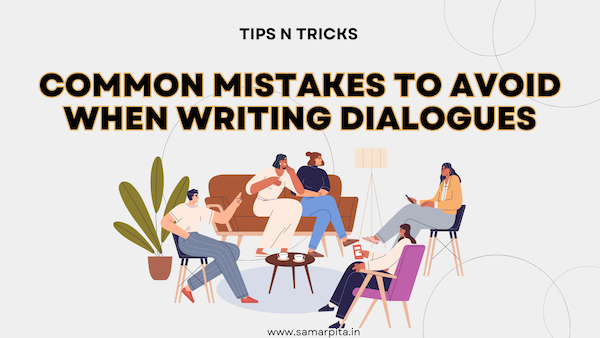Crafting engaging and authentic dialogue is essential for creating compelling narratives that captivate readers. However, there are common mistakes that writers often make in dialogue construction that can detract from the effectiveness of their storytelling. By being mindful of these pitfalls, writers can enhance the quality of their dialogue and elevate their writing to new heights.
Also Read: Crafting Well-Rounded and Relatable Characters with Depth
1. Avoiding Unrealistic Speech Patterns:
Dialogue should reflect the way people naturally speak, with pauses, interruptions, and colloquialisms. Avoiding overly formal or stilted language can help make dialogue feel more authentic and relatable to readers.
2. Steering Clear of Exposition:
Dialogue should not serve as a vehicle for delivering exposition or backstory. Instead, it should focus on advancing the plot, revealing character personalities, and creating tension or conflict. Avoiding lengthy explanations or information dumps in dialogue can maintain the pacing of the story and keep readers engaged.
Also Read: A Ready-Reckoner To Write Authentic and Relatable Personalities
3. Eliminating Overuse of Dialogue Tags:
While dialogue tags such as “said” or “asked” are necessary for clarity, using them too frequently can become distracting. Instead of relying solely on dialogue tags, use action beats and descriptive language to attribute speech, adding depth and nuance to the scene.
4. Steering Clear of On-the-Nose Dialogue:
On-the-nose dialogue occurs when characters explicitly state their thoughts, feelings, or motivations, without subtlety or subtext. Avoiding on-the-nose dialogue allows readers to infer emotions and intentions from the characters’ actions and interactions, creating a more immersive reading experience.
Also Read: Crafting Captivating Openings: A Guide to Grabbing Readers’ Attention
5. Avoiding Monologues:
Long-winded speeches or monologues can disrupt the flow of dialogue and bore readers. Instead, strive for concise and focused dialogue that keeps the conversation moving and reveals information gradually, through natural exchanges between characters.
6. Being Mindful of Voice Consistency:
Each character should have a distinct voice that reflects their personality, background, and experiences. Consistency in voice ensures that characters remain true to themselves throughout the story, enhancing believability and reader engagement.
Also Read: Navigating the Editing Journey: A Collaborative Symphony
7. Avoiding Overly Formal Language:
Dialogue should be conversational and reflective of the characters’ personalities and relationships. Avoiding overly formal or stiff language can help maintain authenticity and make the dialogue more engaging for readers.
8. Eliminating Excessive Exposition:
Dialogue should reveal information organically, without resorting to lengthy explanations or info-dumping. Trusting readers to infer details from context and subtext can enhance the depth and complexity of the storytelling.
Also Read: Demystifying Manuscript Editing: A Comprehensive Journey
9. Being Mindful of Dialogue Length:
Long, uninterrupted blocks of dialogue can be overwhelming for readers and detract from the flow of the story. Breaking up dialogue with action beats, pauses, and shifts in focus can help maintain pacing and readability.
10. Avoiding Dialogue for Dialogue’s Sake:
Every line of dialogue should serve a purpose in advancing the plot, developing characters, or creating tension and conflict. Avoiding filler dialogue ensures that every conversation is meaningful and contributes to the overall narrative arc.
Also Read: 8 ways blogging for business can benefit your business
In conclusion, avoiding common mistakes in dialogue construction is essential for creating engaging and authentic storytelling. By being mindful of unrealistic speech patterns, exposition, dialogue tags, on-the-nose dialogue, monologues, voice consistency, formal language, excessive exposition, dialogue length, and dialogue for dialogue’s sake, writers can elevate the quality of their dialogue and enhance the impact of their writing.
***
If you are looking for an excellent manuscript editor, someone to create content for your business, or an expert to help build your personal or professional brand on social media, then look no further and connect with me at editor@samarpita.in I can be followed on instagram at @samarpita and on twitter at @samarpitadotin.
***********
Read my ebook WRITE. EDIT. PROMOTE. to learn the basics about becoming an author – from writing your own book, to editing your first draft, and to promoting your book yourself! You can also read my ebook How To Write A Story Effectively and learn some valuable lessons about how a story can go from average to extraordinary. This book is part 1 of the series.
In fiction, I have two short stories for children in an ebook called Bedtime Stories.

